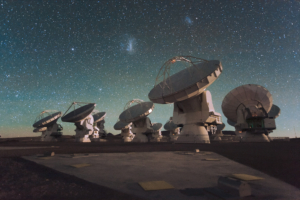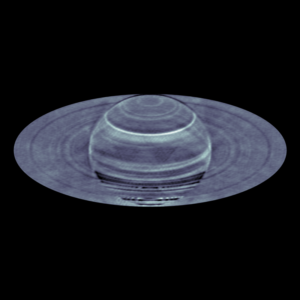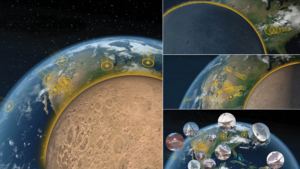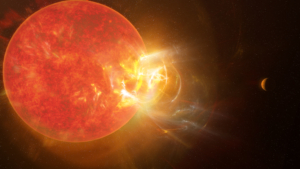Intuitive Machines has been working with the NSF NRAO over the past year to utilize the NSF Very Long Baseline Array (NSF VLBA) to support precise tracking and data downlink of Intuitive Machines’ Nova-C lunar lander, named Athena, during its mission to the Moon.
ALMA Reveals Jupiter’s Moon Io has been Volcanically Active for Billions of Years
Jupiter’s moon Io is the most volcanically active place in the solar system. During its 1.8-day orbit, this moon…
VLA Finds Megastorms on Saturn Disrupt Gas Giant’s Deep Atmosphere in Surprising Ways
A study of rare megastorms on Saturn using data from the National Science Foundation’s Karl G. Jansky Very Large Array has revealed disruptions in the distribution of ammonia gas in the planet’s deep atmosphere. The findings raise questions about just how different gas giants can be from each other, and challenge scientists’ understanding of how megastorms may form on planets other than Earth.
VLA and ALMA Study Jupiter and Io
VLA teams up with Juno spacecraft to study Jupiter’s atmosphere, and ALMA reveals new details about Io’s volcanoes.
Future of Earth’s Defense is Ground-Based Planetary Radar
The Planetary Science Decadal Survey indicated that new ground-based radar systems will be vital research tools for planetary defense and studying planets, moons, asteroids, and other Solar System objects. The National Radio Astronomy Observatory and the Green Bank Observatory are developing new capabilities for the Green Bank Telescope and the Very Long Baseline Array that will meet those needs.
Record-breaking Stellar Flare From Nearby Star Recorded in Multiple Wavelengths for the First Time
Scientists using the Atacama Large Millimeter/submillimeter Array (ALMA) observed a record-breaking stellar flare from Proxima Centauri. The study also marks the first time that a powerful stellar flare, other than those from the Sun, has been observed with such complete wavelength coverage.











